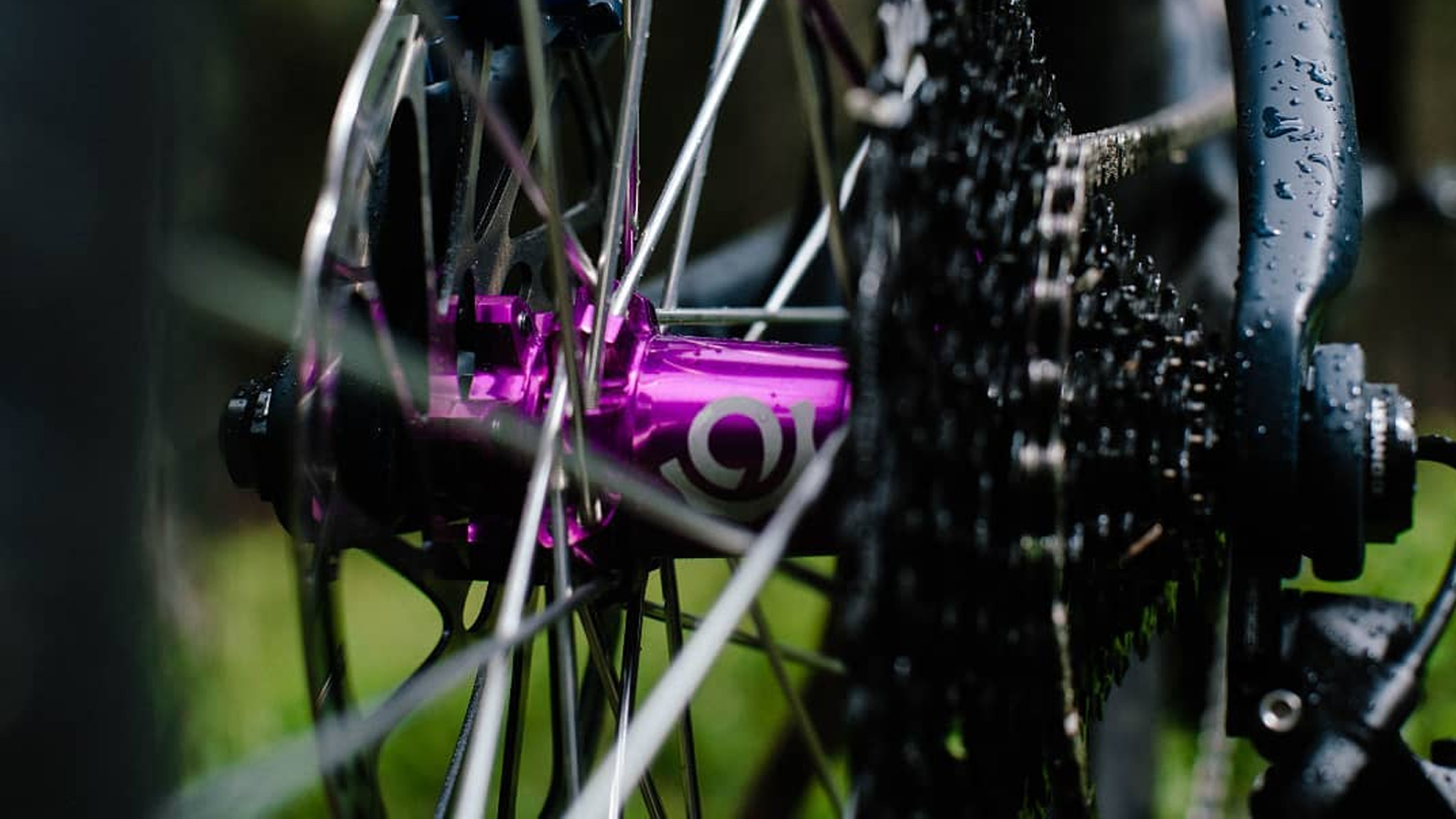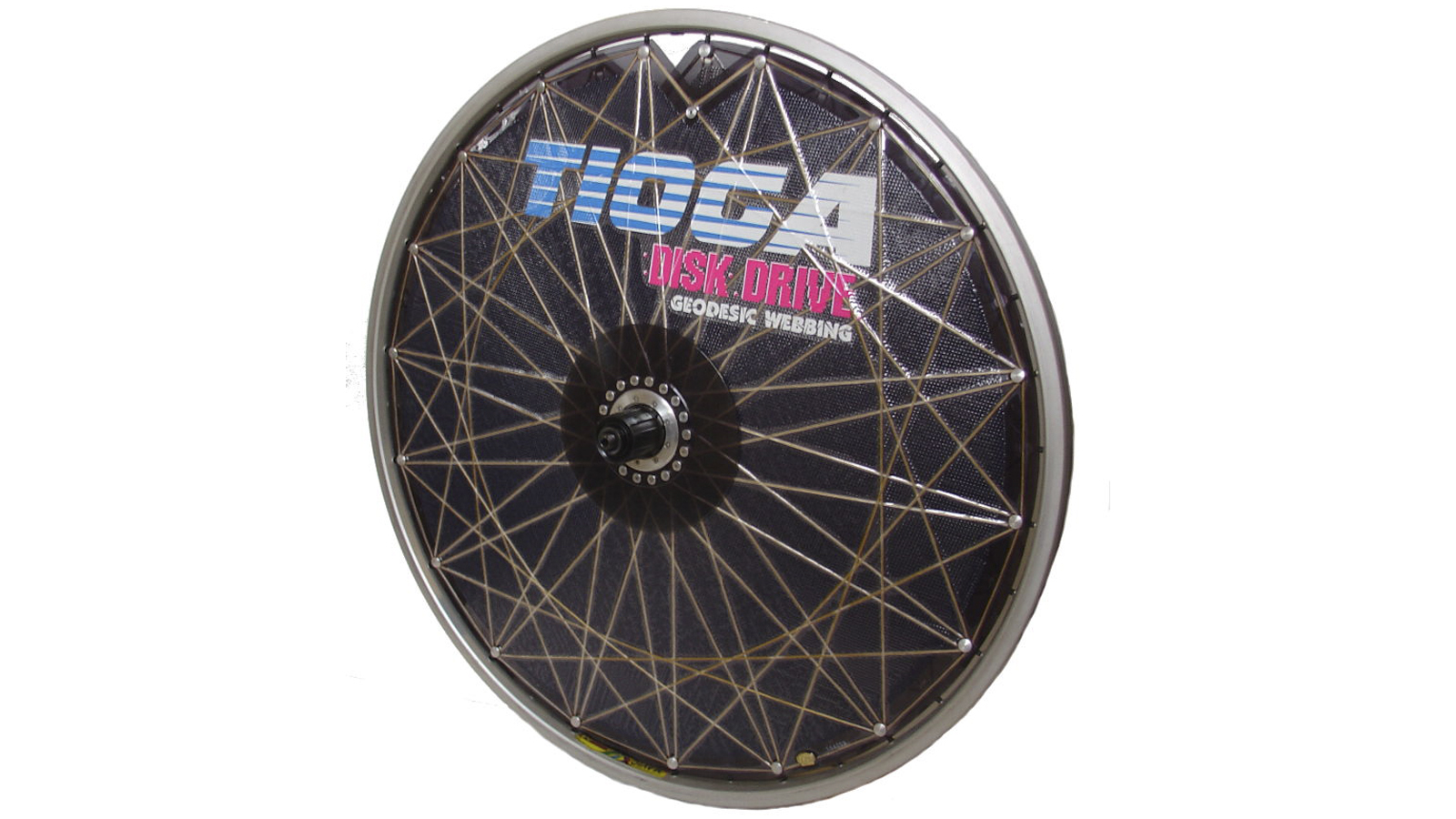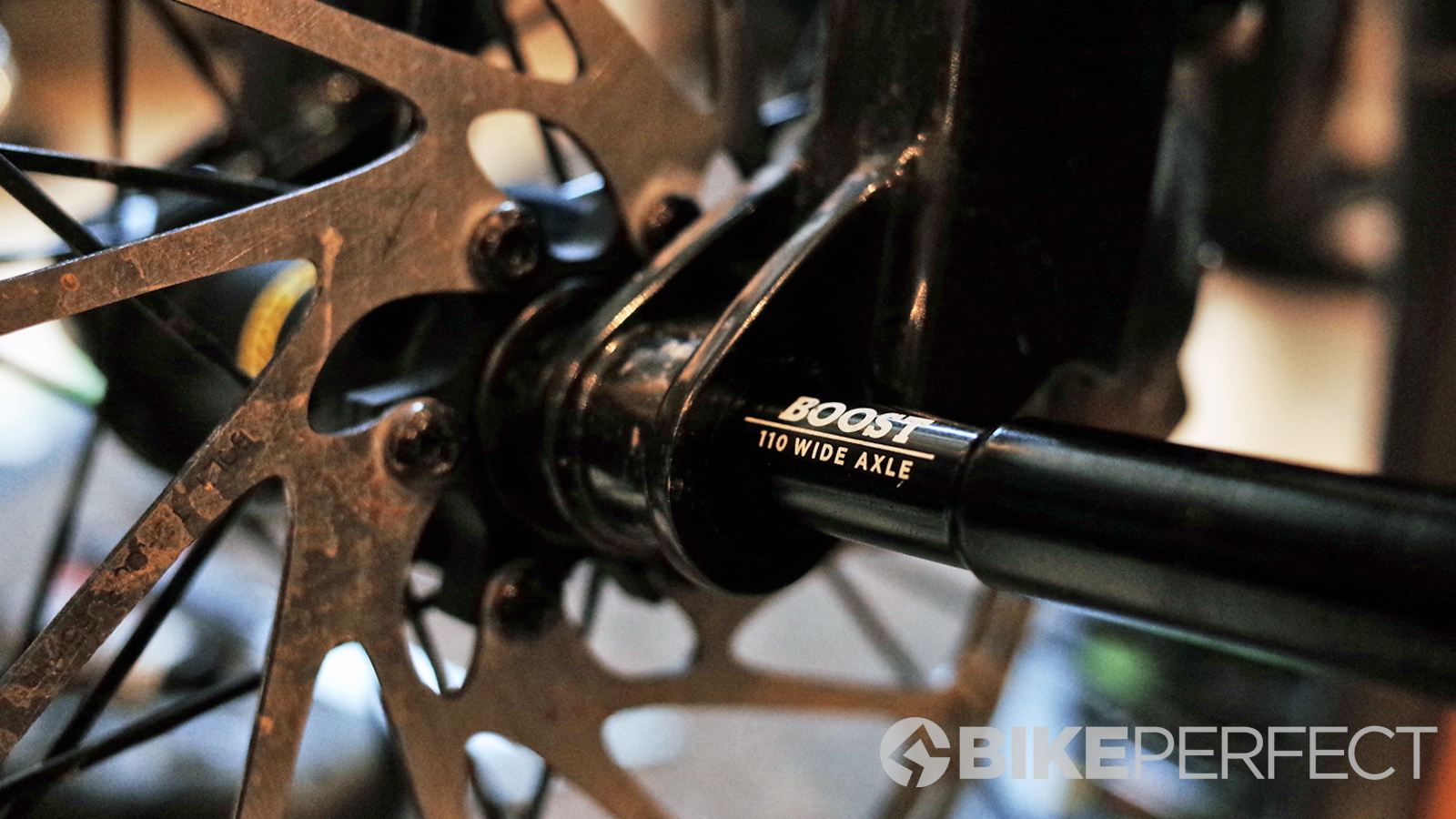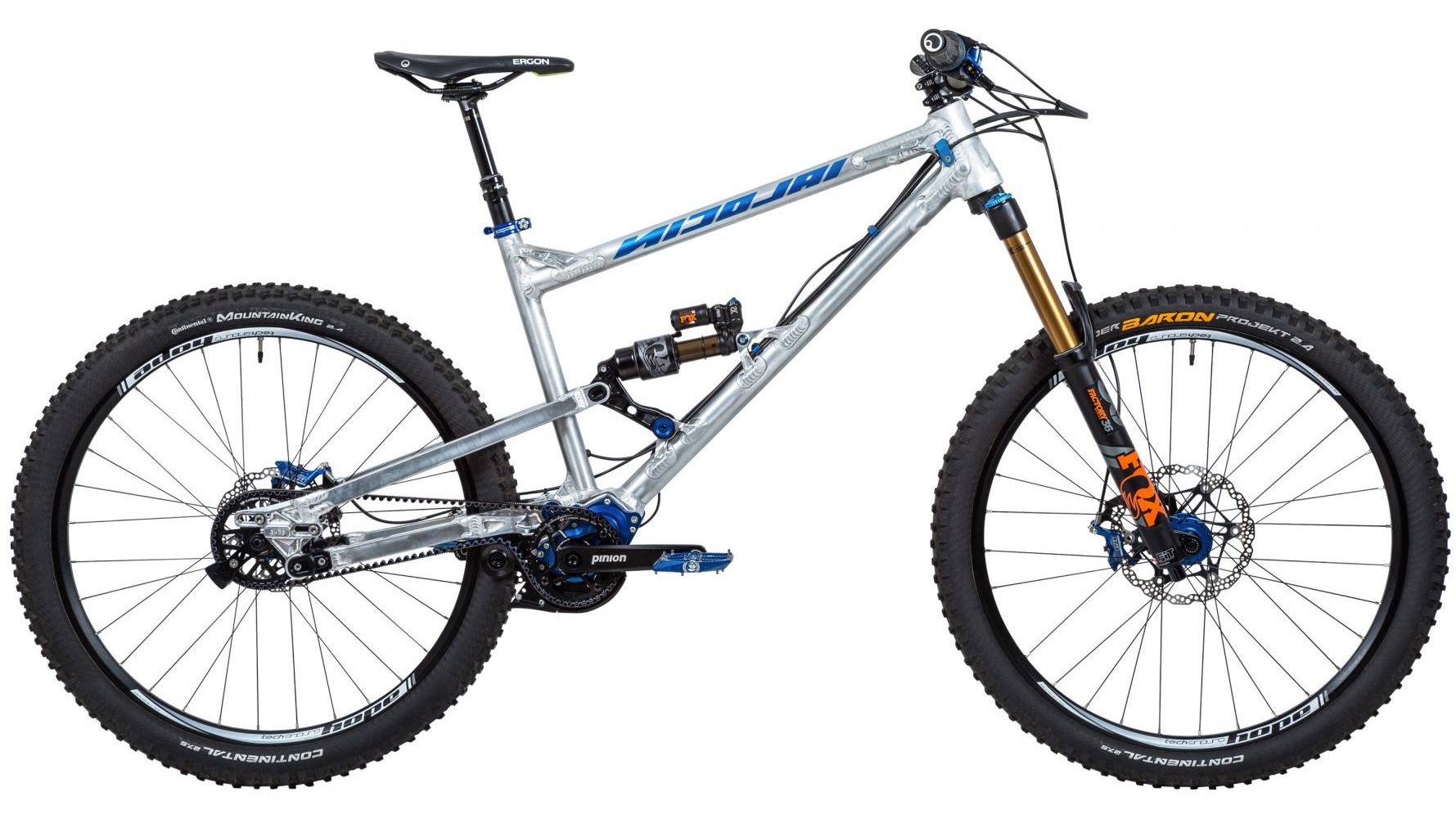Bespoken Word: The hub of the matter
Guy Kesteven talks hubs. An often-overlooked component despite having a far more reaching effect on the design and performance of your bike than you might think

I’ve said before that bike testing is basically an algorithm of different component equations producing an end result and some of the big performance multipliers or subtractors like forks, frame, rear shock etc. are obvious. Others like stop-and-go equipment come into the 'does it really matter’ category of parts that work almost indistinguishably at every price point. If we’re looking for a component that can really make a significant difference to the design and obvious performance of your bike as well as your interaction with it, but that rarely gets the attention and focus it deserves, then the hub really is, well, the hub of your bike. Right now it’s in a bit of a crisis too, so this week I’m throwing my usual mix of history and hysteria at the center of your wheels.
Hub design and evolution have been crucial to mountain bikes since the start. The ‘ 'clunker’ bikes that started mountain biking were mostly single-speed with a coaster/back pedal brake because that was the hub they came with. Rider/tinkerers had been mounting multiple gear setups on cruiser-style bikes for decades and John Finley Scott built his three-speed Cyclo gear ‘Woodsie’ in 1953. However one of Gary Fisher’s biggest breakthroughs on his pre-MTB clunker was using a Hugi (legendary Swiss brand that nobody ever mentions now) tandem hub. This meant he could put a multi-speed freewheel and derailleur gear on one side and still keep the coaster brake on the offside. Gary was also the first to use a freehub-style setup on a mountain bike to benefit from the increased axle support and strength the design allowed. He also pushed for wider 135mm hubs as a standard to give a stiffer frame with more tire space.
After that, things barely changed at all for ages. Yes, there was a massive explosion of fancy (or just fancy-looking) hubs from brands like Bullseye, Ringle, Chris King, Nukeproof, Hershey and Paul in the US and Hope and Royce in the UK. Some hubs like Bullseye and Hope also made hubs designed to work with early disc brakes. The number of gears being squeezed into the space between driveside spokes and frame crept up from six to 10. Other companies started developing their own freehub drive systems too but you’ve got to remember that we’re talking about a time when nearly all wheels (besides composite sets like Spin) were hand-built from separate rim, spokes and hubs. Even the infamous Tioga Disk Drive, used a conventional hub. Only when Mavic introduced the first CrossMax wheel in the late 90s did ‘wheel systems’ or complete pre-built wheels from a single manufacturer start to become a thing.

We were still using on-road-bike-style QR levers at the start of the 2000s though, with larger diameter thru-axle systems being rare experiments mostly on DH bikes. It wasn’t until RockShox released the ‘Tullio’ (named after Tullio Campagnolo who invented the QR cam axle design) on their Psylo fork and then followed it up with the first Maxle on the original Pike that stiffer 20mm diameter thru-axles started to appear on trail bikes.
New standards
That’s when things started getting really complicated, with Fox deciding 20mm was too big for trail and that 15mm would be much better, despite it being negligibly lighter and demanding a whole new set of hubs and wheels to fit. Then through-axles started appearing on the rear of trail bikes and again despite 150mm hubs (actually 153mm in axle width which we’ll return to later) being seen as overkill. So instead we got 135mm x 10- or 12mm axles, then 142mm x 12mm which is what road and gravel bikes use now.
Just when it seemed to be settling, Boost 148mm hubs came along because tires and wheels were getting bigger and gave bike designers more width and space to work with. That was then matched by 110mm Boost hubs upfront rather than 100mm so there was more finger-pointing at hubs deliberately making bikes obsolete every few years despite the fact it was just hubs responding to other changes. And then Super Boost came along which at 153mm was actually the same as the 150mm standard that DH bikes have been using for ages. Interestingly there has been a much more limited and reluctant take-up of this new standard, with only a handful of brands like Pivot and Evil currently running extra wide backends and even then not on all of their bikes.

While that might mean axle widths are stabilizing, there are still a lot of other things to think about. The battle between six-bolt disc brake rotor fitting and Shimano’s Centerlock design has been raging back and forth for ages. More and more companies do seem to be creeping towards the more convenient and secure Centerlock design now, and adaptors make the move from six-bolt to splined nice and easy.
- Best mountain bike disc brake rotors: replacement rotors for better braking
Freehub free market
The two horse freehub standard race between Shimano and SRAM has really kicked off recently. SRAM was already confusing matters by designing their cheaper NX and SX Eagle cassettes with an 11-tooth smallest sprocket and Shimano style ‘HG’ fitment as it was cheaper than its XD freehub design that allows the use of a 10-tooth smallest sprocket. However Shimano itself has now created a fresh freehub standard so that it can build a wider range 12-speed cassette to compete with SRAM, but this Micro Spline system is totally different from anything else and Shimano has been slow to open up the technology to every hub maker.
After years of being exclusive to DT Swiss the Hugi (remember them) Star Ratchet system is now out of its patent date. That means I’ve been getting loads of calls asking for advice from wheel brands who are considering using a non DT Swiss version of the cunning twin toothed plate technology rather than the traditional three or six separate sprung pawls locking into place on a toothed ring to propel your bike forwards. I’ve already seen multiple failures of these new non DT ‘Star Ratchet’ designs though so I’d be very wary about buying into that tech yet.
Whatever engagement system you get you need to think about how fast you want it to connect. Ever since Chris King built his own driver ratchet design with near-instant pick-up, getting the immediate power delivery that comes from just a three- to five-degree crank rotation before engagement has been seen as an obvious advantage for a responsive ride. The more engagement teeth you have to achieve minimal lag, the smaller each of those teeth will be and therefore the weaker and more likely to strip and skip they will be. That’s even more important in e-bike systems where the hub is dealing with a lot more torque than usual. Having said that we’ve seen a roughly equal failure rate across stripped small tooth systems and overloaded two or three pawl (the sprung ‘hook’ that engages the drive teeth) so we’d say that depends more on the quality of manufacture than basic design.
- Best MTB groupsets: the best mountain bike groupsets tested
- Best mountain bike forks: the best MTB forks for XC, trail, enduro and downhill
- Best rear shocks for mountain bikes: from XC to DH and budget to bespoke
Engaging suspension
How fast your hub engages can also affect your suspension. That’s because in almost every suspension bike any chain load will affect how much the back wheel can swing backward without tugging your cranks around backward which in turn stops the shock from moving freely. How much that will affect specific designs depends entirely on pivot position and suspension kinematic. As a general rule the more anti-squat the suspension of your bike has, the fewer clicks/bigger gaps you’ll want on your freehub to stop it interfering with the suspension as your wheel is pulled back by impacts. Even the current trend for wider range, heavier gear cassettes reduces suspension responsiveness - it’s genuinely very noticeable when running a light, single gear hub on a gearbox bike - but then that’s not really a hub issue, more of a gearing one.
Interference with suspension (as well as unsprung weight issues) is what’s stopped internal hub gears ever catching on widely with MTBs, too. Which is a shame as their well-sealed nature, broader, stronger chains and fixed chain position rather than endless back and forth straining across shifts make a lot of sense for bikes being ridden through every sort of weather. That’s unlikely to change any time soon either, but if someone gets a decent gearbox together then that could really liberate the hub end of your bike in terms of both weight and width.

If you’re looking to buy a new wheel or replace a hub now though, I reckon you’re relatively safe sticking with a Boost 15x110mm front and 148x12mm rear. That might change if a major manufacturer suddenly decides Super Boost is a good idea and others follow suit. My sense is that would have already happened by now and right now, everyone is flat out trying to keep up with what they’ve got rather than complicating matters.
Beyond that, the speed of pick up and whether you want a six-bolt or Centerlock rotor attachment is up to you and the bike/equipment you already have. What I’d definitely say though is stick to proven hub mechanisms. While the latest new thing from a brand might be tempting, from a testing perspective those are nearly always the ones that end in a “ah yes, we’re having a slight issue with that, but the next batch will be fine” conversations with manufacturers. That’s bad enough if you’ve pushed back from a local ride and have lots of other test wheels ready to slide in. But if you’re in the middle of nowhere and potentially waiting months for a replacement part or complete wheel rebuild, then a solidly dependable hub from Shimano or investing in a top-quality hub with super durable bearings from DT Swiss, Hope or Chris King is definitely wise targeting of your budget.

Guy Kesteven has been working on Bike Perfect since its launch in 2019. He started writing and testing for bike mags in 1996. Since then he’s written several million words about several thousand test bikes and a ridiculous amount of riding gear. He’s also penned a handful of bike-related books and he reviews MTBs over on YouTube.
Current rides: Cervelo ZFS-5, Specialized Chisel, custom Nicolai enduro tandem, Landescape/Swallow custom gravel tandem
Height: 180cm
Weight: 69kg
